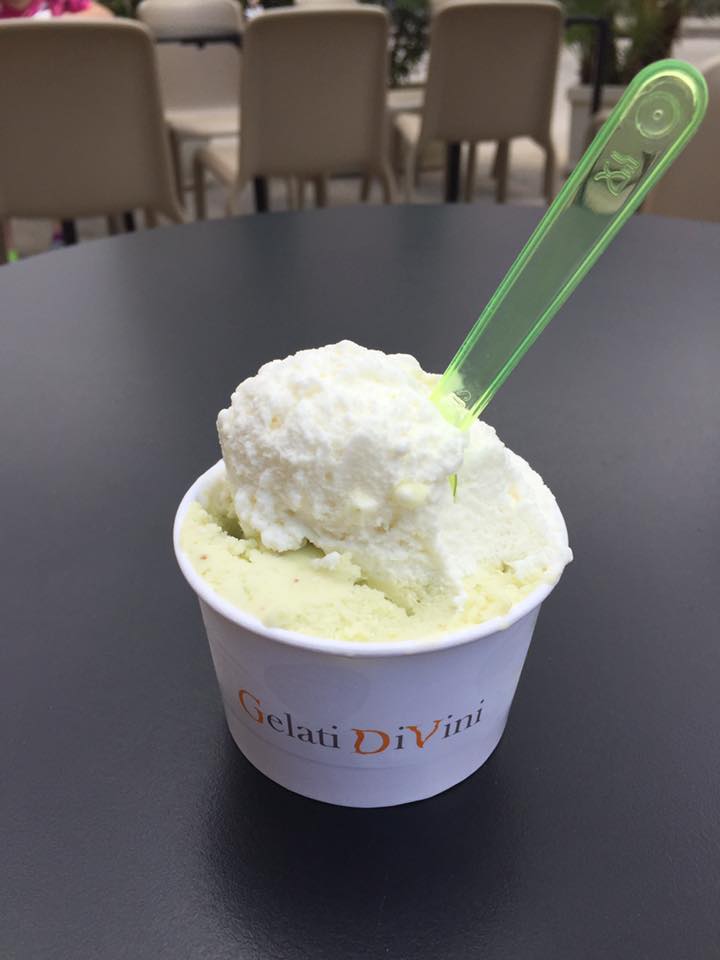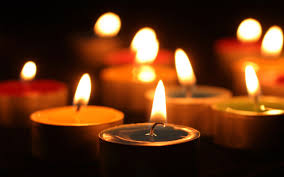I love coming back from vacation and telling my friends and family about it. Ok, I don’t really love coming back from vacation, but I do love sleeping in my own bed, petting my kitty cats and seeing friends that I’ve missed. This year was a very special trip to Italy and its large southern island of Sicily. While there, we visited with family and friends, we returned to the site of our marriage fifteen years ago, and we saw amazing places along the way.
Upon our return to the States, I tell our friends and family about swimming in the Tyrrhenian Sea, about eating at the same restaurant we did on our wedding night. I talk about the flavors of Gelato, beautiful candy and earth colors of them lined up along the freezer, and of choosing new flavors like jasmine or pistachio-chocolate or green fig. I tell them about the massive Greek temple ruins that the girls clambered along, about the graceful Baroque churches, or about the bell-towers or domes we climbed to get the best view. I might tell them about the harrowing drives along the Amalfi Coast, with narrow roads hugging the cliffs or navigating traffic in Sicily where the street signs and traffic lights are more like suggestions than laws to native Italian drivers. Maybe I share stories of encounters with the locals, like the sausage man who threw rings of salami in the air to the kids and persuaded us to buy a link as long as my seven-year-old’s arm. These are the stories I tell them. These are the stories that they want to hear.
But vacations are not all wonderful moments, and when you have a child with special health care needs, you not only have to plan more, but you have to be ready to roll with the punches when they come along, and that’s all a part of the journey, but not a part anyone wants to hear about.
My twelve year old has multiple health problems, but one of them is that she is a type one diabetic, which means that she cannot produce her own insulin to digest carbohydrates. We have to give her insulin with every meal based upon what she eats so that she will stay healthy. This has to be given subcutaneously, or under the skin, in order for it to work.
The first moment of terror for me this vacation was when I realized, suddenly, that we had foolishly forgotten the extra insulin for my daughter at home. We had enough for a week, but we would be away a few days longer than that. Calls were made to our insurance company, and we discussed overnight shipping, ice packs, and reliable addresses. This didn’t sound like a good option. So I learned how to say in Italian, “My daughter is a diabetic, and I would like to buy some more insulin,” Normally, my Italian is limited to restaurant menus and directions to the WC, so this was a stretch. We were in a tiny hill town called Castel Gandolfo, some twenty miles south of Rome, it holds the summer palace of the pope and contains the dairy cows used to make his special milk. It sits on the edge of an old volcanic crater that now has a lake. Our apartment looked out over the lake and we could walk the whole circumference of the hill town in under a half hour. We went to the first farmacia, the Italian word for pharmacy, with a green fluorescent cross outside its door, located in the shadow of the summer palace. The pharmacist understood what I was trying to say, but told me in Italian that he didn’t have what I needed, but not to worry, other farmacias would, I just needed to keep looking. Ok, onto the next stop.
This was the town of Amalfi, when fifteen years earlier my husband and I got married in the presence of a handful of close friends and family. We had planned to have dinner at the same restaurant as we did on our wedding night, so we arrived early to the town, walked around and waited for the restaurant to open. I spotted a farmacia tucked away in a little square. Amalfi is a seaside community, with steep cliffs and rocky beaches, and I was standing in line at the farmacia with beach goers who had gotten too much sun or mothers that needed more formula for their babies. But luck was with me, the woman at the farmacia produced what I needed: a vial of Humulog. I finally was able to relax knowing that we could take care of our daughter for the whole vacation, and get insulin as we needed it.

Which was good, because we needed it again, in a more dire way. My daughter wears an insulin pump, and we were in the small Baroque town of Noto in south east Sicily. We were admiring the large cathedral in town that was showing off its new dome, because the old dome had collapsed in the 1990s and it had just been reconstructed. The church was beautiful, clean, cream colored, with gorgeous statues along the walls and spacious pews making the whole church feel light and airy. When we heard the high pitched alarm, we knew immediately what it was, Wendy’s insulin pump had malfunctioned, and needed to be replaced. I sat in a corner of the church looking at a statue, getting out the medical supplies, and making a new “pod” of insulin so we could put it back on Wendy. That involves disconnecting the old pump, filling a new one with a large syringe and a vial of insulin, making sure it works, then re-attaching it, and turning it back on. I wondered if anyone was going to stop me with the large medical bag and beeping equipment, but no one did. I filled the new pod with the last of the insulin, and then I handed it to Wendy to apply it in a bathroom with an alcohol pad. Normally I would help her, but Italian bathrooms are notoriously tiny, so she did it herself.
We walked around the lovely town thinking we had dodged a bullet, climbing the bell tower and looking at the magnificent view, but when we found a local trattoria and ordered our dinner, we noticed that Wendy’s blood glucose was too high and gave her a bolus of insulin before dinner. It didn’t work and she went higher, so we gave her another bolus, but that didn’t work either. Something was wrong.
It turns out that Wendy didn’t apply the new pod well to her skin and it wasn’t working. I had used the last of the insulin on the new pod, and we had more in the refrigerator back where we were staying, an hour away. We were with another couple, a childhood friend of my husband and his family, and we had all visited the town together, had dinner together, and we had promised the four children gelato if they did well in the restaurant.

The problem was that Wendy’s glucose was too high to go untreated and give her gelato too. It would have sent her sugar up to dangerous levels. But all of the other kids were expecting gelato, in fact, the town of Noto is supposed to have the best gelato in Sicily. We couldn’t tell them just wait while we drive an hour to get more insulin, reapply a new pod, hope it works, and drive back another hour. It was late, it was dark, and the kids expected the best gelato in Sicily.
An option could have been to let the other kids have gelato but not Wendy, but honestly, that would be a scarring memory for her, and while we want her to know that she is extraordinary, we want her to know that she is normal too, that she can do normal things, just like the other kids, and that includes sampling the best gelato in Sicily. Imagine watching your friends all eating gelato and you can’t at the age of twelve.
Now tell me what you would do as a parent.

So we went to a farmacia in Noto. I spoke my sentence in Italian. The first one didn’t have a vial. We walked to a second one, and thank God, they did. We opened the box, opened the vial, pulled out an insulin syringe that I also happen to have with me in the medical bag, calculated what she would need to give her to both reduce her glucose and give her insulin for a gelato too, and we filled the syringe, gave her a shot in the arm right there in the farmacia, admist little boys with tummy aches and people who needed band-aids, handed the used syringe to the pharmacist to dispose of safely, and we left the store.
Then we walked to the restaurant with best gelato in the world and ate it.
And it was delicious.
After it was all over, after the alarm, the new pod in the church, the dinner, the two farmacias, the injection and finally the gelato, it had taken the better part of the afternoon and evening, just for one little girl, just for one diabetic, just for one vial of insulin, just for one cup of gelato.
And what was the best part of the day for me? My twelve year old, when it was all over and we were walking back to the cars after the gelato, ready for the drive back to where we were staying, took me aside by the arm, kissed me on the cheek, and thanked me for going through all of that. She understood the effort it took, and she was grateful. That’s what I’ll remember, not how hard it was, but how much she appreciated being able to be just one of the the other kids joking and laughing and eating the best gelato in Sicily.
This is not a story I’m necessarily going to share with my family and friends when I get home. Why not? It’s not exactly what they want to hear. They want to hear about the swimming and the churches and the beautiful art, the stories of the crazy drivers and the marketplace hawkers. They don’t want to hear about the hard stuff, the worry, the difficulties. Vacations are supposed to be fun, right?
But to me, this isn’t just a vacation, it’s showing my daughter that her medical difficulties can be overcome, that problems can be sorted out, even in another country, even when we don’t speak the language. That if she really wants something, we will find a way. That she shouldn’t be held back by the difficulties, but should look at them as challenges to be worked through. Yes, it’s a beautiful location to learn this lesson, and yes, we are lucky that she’s healthy enough to do the travelling in the first place. But to me, the travelling is showing her that solutions are possible.
The rewards can be sweet.














